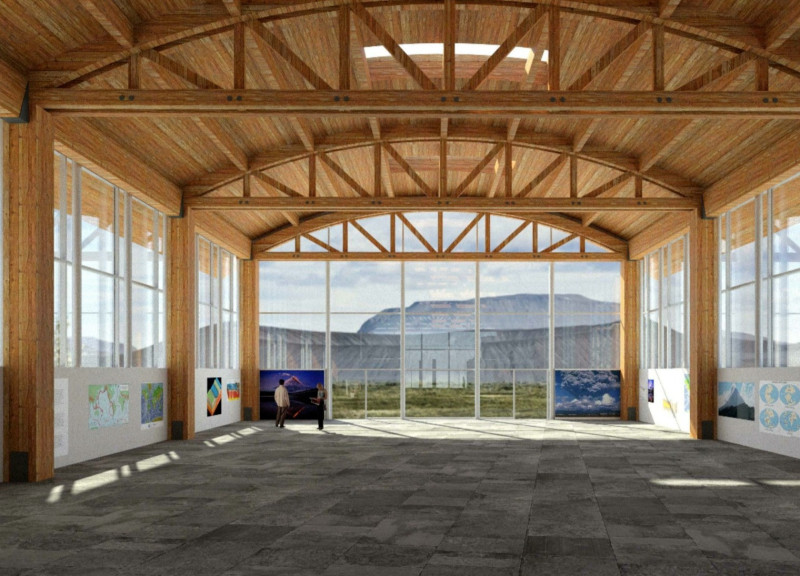5 key facts about this project
The Iceland Volcano Museum is located near Hverfjall volcano, serving as a space for education and cultural exhibits. The design promotes a connection with the surrounding landscape while incorporating elements of local architecture. It emphasizes both modern functionality and traditional building practices, creating a distinctive environment for visitors to explore.
Design Concept
The design focuses on how spaces interact to enhance the visitor experience. Large timber structures define the entrance, guiding guests from the lobby to the main gallery. These recognizable forms support the building while reflecting regional construction traditions. This arrangement helps create a clear pathway that invites exploration from the moment visitors enter.
Spatial Organization
Inside, the layout promotes easy movement throughout the museum. Flanking atriums are designed to bring in natural light and offer alternative paths for visitors to take during their visit. The main gallery is spacious and versatile, allowing for a variety of exhibitions. Each exhibit area is thoughtfully organized, ensuring that different themes can be experienced without losing a sense of continuity across the museum.
Materiality
The materials chosen for the museum reinforce its relationship with the local environment. Wood is featured prominently in the large timber structures, echoing traditional Icelandic architecture. The use of durable stone walls connects the building to the region's unique geology. Metal roofing adds a practical modern touch, while Structural Insulated Panels improve energy efficiency and address the local climate.
Facilities
The museum’s design includes functional spaces that are well thought out for both visitors and staff. Office areas are easily accessible, positioned to maintain an effective workflow without interfering with the visitor experience. The cafeteria is strategically placed to offer views of Hverfjall, providing a tranquil spot for visitors to relax and appreciate the landscape.
The building features sharp angles and distinct rooflines, creating a profile that stands out against the volcanic backdrop. The careful choice of materials enhances the design's connection to its environment, allowing the museum to resonate with the surrounding natural beauty.






















































